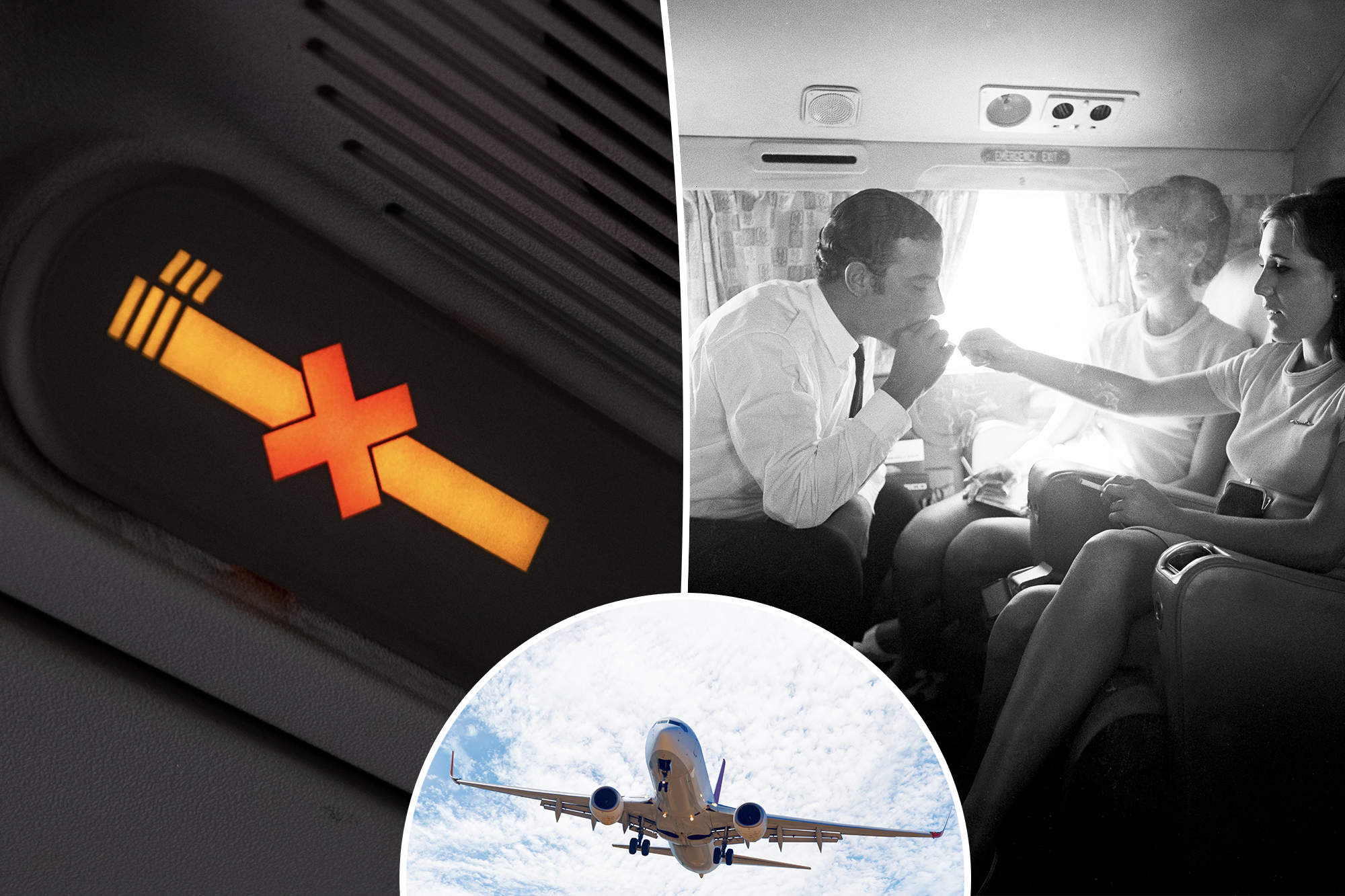
Better late than never.
On Oct. 22, the Federal Aviation Administration eliminated the rule that required an off switch for the “no smoking” sign on planes, even though smoking on U.S. flights officially ended decades ago.
Before the change, domestic and international flights allowed passengers to smoke while on board, despite the risk of fire, with flight attendants and passengers taking cigarette breaks, often leading to a thick fog inside the cabins.
“The growth of aviation literally parallels the growth of cigarettes,” Alan Blum, director of the University of Alabama’s Center for the Study of Tobacco and Society, told the New York Times.
Smoking on airplanes became a popular habit for many Americans, to the point that in 1973, the federal government required airlines to seat smokers and non-smokers in separate sections. Despite the fact that the compartment didn’t do much for anyone’s health or reduce fire hazards, passengers continued to inhale and exhale while on the plane.
However, the smoke sessions did not last long as lawsuits began to be filed, becoming the center of the infamous tobacco lawsuits of the 1990s, affecting travelers and airline employees.
Lawyers sued tobacco companies on behalf of flight attendants suffering from the effects of secondhand smoke. The tobacco industry agreed to pay millions to fund a research institute and support a federal ban on smoking on international flights.
The FAA enacted the ban in 2000, expanding the regulation to permanently prevent smoking on any flight landing or departing from a US airport.
After the FAA banned smoking sessions, airlines adapted to the new rules by displaying a “no smoking” sign, which “continues to be an effective reminder to the traveling public,” the agency said.
Decades after the guidelines were codified, many airline attendants continued to manually roll up the “no smoking” sign during every flight.
However, the switch back and forth caused a series of flight delays for United Airlines in February. Their new Airbus planes faced problems when the “no smoking” signs on board could not be turned off. The hold prevented flights from taking off until the switch was fixed. The FAA later granted United’s planes an exemption.
Airlines and aircraft manufacturers found the outdated requirement to be “time-consuming and burdensome,” and despite the annoyance, they fine-tuned their systems to comply with FAA rules.
“Those ‘no smoking’ signs should always, always, always be there,” Patty Young, a former flight attendant, told the New York Times. “People still try to smoke on planes.”
Although people may not light up on airplanes with cigarettes, they have pushed their limits with vaping or e-cigarettes, a device used to inhale aerosols, the National Institute on Drug Abuse described.
As previously reported by The Post, a first-class passenger forced a Texas-bound American Airlines flight to make an emergency landing in Oklahoma when he refused orders to stop steaming after takeoff.
When a flight attendant issued a warning — saying vaping on a plane violates federal rules — the man allegedly scoffed and accused her of making false accusations against him.
Among the 55 incidents reported by 2022, 19 of them involved gases and e-cigarettes. “That’s 35% of all incidents in 2022 and triple the incidents reported in 2019,” the FAA spokesperson told Newsweek.
#smoking #signs #airplanes #remain #permanently #lit
Image Source : nypost.com